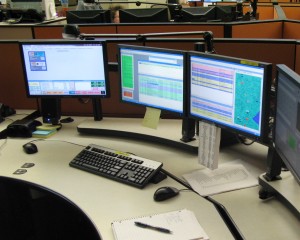NG9-1-1: Navigating Unfamiliar Territory
During the past several months many of us who work in the public and private sectors of the 9-1-1 industry have engaged in at least one discussion about Next Generation 9-1-1 (NG9-1-1). For many of us, these discussions have been more confusing than enlightening. During recent meetings and panel discussions at the APCO Winter Summit, many members expressed frustration at the lack of consistency that accompanies the use of the term NG9-1-1 and asked that we provide them with a crisp explanation of where we’re going from here.
The changes necessary to improve emergency communications in our country and the technologies that will be used to implement these changes are significant. The new 9-1-1 systems from the perspective of the public, PSAPs and technology vendors will, in many ways, be vastly different from what we are familiar with today. The basic concept, however, will remain the same. 9-1-1 will continue to be the number used to request help when we need it the most, and our calltakers and dispatchers will continue to be the first points of contact that begin the chain of an emergency response.
What’s causing the confusion?
In hindsight, the term Next Generation 9-1-1 lends itself to varying interpretations and, in many cases, is equated with only the multimedia technologies that will be used in 9-1-1 centers. Text, video, telematics and other intelligent sensor applications are some of the technological benefits that communications centers will be able to take advantage of when they implement IP-capable systems, but they are not the core of what will constitute a next generation, i3 capable PSAP.
The core of NG9-1-1 is not as much about how calls of the future will look when we receive them as it is about how those calls will be delivered and how a caller’s location will be verified.
NG9-1-1 is an evolution of Enhanced 9-1-1 from traditional telephone communication to an all IP-based emergency communications system. Solely implementing IP connectivity or enabling Internet access in a PSAP does not constitute an NG9-1-1 capable system. The new architecture will be based on a system design being drafted by NENA, with contributions of other organizations, titled i3.
The i3 document is a technical specification standard that addresses how 9-1-1 calls will be handled once they are within an emergency service IP network. Calls will not be delivered over the public Internet. The i3 architecture specifies that 9-1-1 calls will be delivered to PSAPs via managed emergency services networks, or ESInets. Agencies involved in emergency response that are properly authorized will have access to the ESInets; the general public and other outside entities will not.
A number of agencies and regions have, or are in the process of building, IP networks to handle their emergency calls for service. Traditional telephone switches and selective routers will be replaced by IP Selective Routers that allow calls to be delivered via packet switch technology instead of traditional telephone trunk lines. These implementations are a step in the right direction toward newer technologies, and a new method of handling 9-1-1 calls, but describing them as NG 9-1-1 systems is creating a confusion. It’s important to recognize the difference between IP-capable PSAPs and i3 capable.
IP or i3: What’s the difference?
The i3 system specification design, in conjunction with IETF (Internet Engineering Task Force) standards for handling emergency calls, will provide the impetus for a standards-based, unified approach to implementing NG9-1-1 systems. Technical standards will ensure that NG9-1-1 systems across the country can interoperate seamlessly and effectively. Systems that conform to the i3 standard for the delivery of emergency calls via IP-based signaling are what should be referred to as NG9-1-1 systems.
Understanding the content of i3 and visualizing how it differs from stand-alone IP 9-1-1 call delivery, is the next challenge. Many of us NG9-1-1 novices, who realize we will not be in familiar territory anymore, would prefer to not have to navigate our way home via the almost 200 pages of technical specifications contained in the NENA i3 document. We just want to know where “home” is and how to arrive there safely. Fortunately, with proper education, careful explanation and repetition, many of the concepts and components of NG9-1-1 can be easily understood.
This is the first in a series of articles that will detail the functional elements within the NG9-1-1 architecture and an i3-capable PSAP. In future articles, we will review new terms and functional elements such as the emergency call routing function (ECRF), location validation function (LVF), emergency service routing proxy (ESRP) and the location information server (LIS). New concepts, such as policy rules and the role that GIS will play in routing 9-1-1 calls, will also be discussed.
Going forward there will be many NG9-1-1 publications, discussions and educational offerings from a variety of sources that to the untrained eye may seem unnecessarily repetitive. Repetition, however, is not necessarily a bad practice when it comes to learning something as complex and unfamiliar as the technology driving NG9-1-1. The writing and presentation styles of each author will offer readers unique perspectives on these critical topics. APCO encourages all of its members to take advantage of available opportunities to learn about the architecture of NG9-1-1 and to keep asking questions about any area that is not well understood.
Next month, we will focus on the unique methods used to route 9-1-1 calls to PSAPs and how agencies can begin scrubbing their data in preparation for NG9-1-1 implementation.
About the Author
Kathy McMahon, Technical Services Manager, APCO International, mcmahonk@apco911.org.
Originally published in Public Safety Communications, 76(5):20-21, May 2010.


